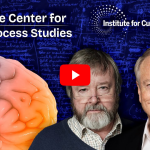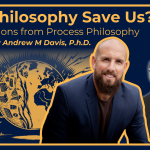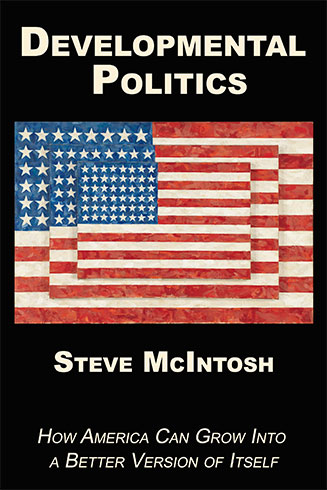Introduction: The Rise of Evolutionary Spirituality
Evolutionary spirituality is being born out of the growing realization that the scientific and historical story of our origins actually presents a profound spiritual teaching about the purpose of the universe and our place within it. Evolutionary spirituality, however, is not a religion or belief system. Rather, it represents a new level of cultural agreement that can include and uplift many of the existing forms of spirituality found in contemporary culture. In other words, evolutionary spirituality aspires to create a widely agreeable public form of spirituality that can provide a greater sense of solidarity and cohesion for those living in the developed world, while simultaneously retaining pluralism and making abundant room for a diversity of convictions about what is ultimately real. In short, evolutionary spirituality endeavors to transcend and include what is currently on offer in the spiritual marketplace of ideas through a new approach to spiritual teaching and practice.
Evolutionary spirituality, as I understand it, transcends previous forms of spirituality through two crucial insights that serve as its foundation. The first insight comes from an enhanced recognition of the spiritual nature and behavior of the intrinsic values of beauty, truth, and goodness. And the second insight involves what is coming to be known as the “spiritual teachings” of evolution itself. As I argue in chapter 2, the scientific truths of cosmological and biological evolution, together with the historical truths of humanity’s cultural evolution, reveal a truth so comprehensive and significant as to have spiritual implications of its own. Properly interpreted, the evolutionary unfolding of nature and history, as well as the evolution of human consciousness itself, represents a kind of revelation that serves as a useful criterion for evaluation—a reliable standard of measurement—for practically all spiritual truth claims.
Moreover, through the practice of evolutionary spirituality we become agents of evolution—emissaries of the future—whose mission is the improvement of the human condition. And the experience and creation of that which is spiritually real—that which is beautiful, true, and good—is ultimately how we make things genuinely better. In other words, we become direct participants in evolution’s unfolding—the process by which something more keeps coming from something less—as we work to increasingly perfect ourselves and our world. Thus, those who are on an evolutionary spiritual path recognize that their purpose in life is to participate in the gradual perfection of the evolving universe of nature, culture, and self. . . .
Chapter 5: Contemporary Spiritual Currents: Progressive and Nondual
. . . [In this chapter] we consider the most recent trends in progressive spiritual culture that have become evident since the turn of the millennium, leading to the conclusion that progressive spirituality is reaching a kind of maturity or culmination through its growing agreement regarding the nondual nature of ultimate reality. And this agreement itself is arising from the partial merger of the practices and truth teachings of Advaita Vedanta Hinduism and Westernized progressive Buddhism. . . .
Once we have examined the recent maturation of progressive spirituality and the evolutionary opportunity this creates, we will be ready to explore in the next chapter how evolutionary spirituality can use this opportunity to transcend the limitations of progressive spirituality and thereby achieve the next dialectical step in our society’s cultural evolution. . . .
An Existential Spiritual Polarity Becomes More Clearly Visible
The rise of nonduality as the mature expression of progressive spirituality provides new insight into the landscape of spiritual experience itself. As discussed above, the teaching that ultimate reality is essentially nondual has now brought together most of the major strands of progressive spirituality into a widespread cultural agreement. And the emergence of this agreement itself makes clear that nonduality is a vital and authentic aspect of spiritual reality.
However, no matter how popular this teaching may become and no matter how authentic the spiritual experience of nonduality may be, this does not negate or subordinate the experiential authenticity or cultural significance of other current forms of spirituality that are not nondual. In other words, within the spiritual marketplace of ideas, both contemporary and historical, other equally venerable kinds of spirituality can be found whose teachings point in a somewhat different direction. While some proponents of nondual spirituality contend that such alternative teachings are simply lower, or less true, the experience of nonduality itself does not justify such a conclusion. In fact, one of the virtues of a nondual unitive experience is that it is completely transconceptual, so it does not lend itself well to conceptual claims of belief system superiority.
As a result of its welcoming pluralism, the culture of progressive spirituality continues to embrace a wide variety of convictions regarding the character of ultimate reality. Yet even when we account for the full spectrum of diversity and acknowledge the myriad ways that people can experience spirit, when we survey the field of contemporary spirituality a clear pattern can be discerned. And as I will argue through the rest of this chapter, this evident pattern within spiritual experience points to two fundamental ways in which ultimate reality is most often experienced by spiritual practitioners: either it is experienced as unqualified unity, or it is experienced as a transcendent Creator. Simply put, spiritual experience itself reveals two essential kinds of ultimate reality, which can be loosely identified as nondual and theistic.
These two fundamental conceptions of ultimate reality, however, are not just lying next to each other as alternative possibilities. Their dynamic relationship produces an interactive structure that takes the form of an existential polarity. That is, within the ideational and experiential terrain of humanity’s search for ultimate meaning and value a dialectical tension exists between two essential conceptions of ultimate reality. And as discussed in chapters 2 and 4, existential polarities such as this can be recognized as systems of development providing openings for further evolution. . . .
The Polarity Exists within Spiritual Experience Itself
The experience of spirit itself seems to divide naturally into two distinct categories that provide the foundation and determine the teaching themes for the nondual and theistic forms of spirituality we are exploring. As we have seen, nondual versions of spirituality are founded primarily on the universal mystical experience of formless unity. As Advaitan teacher Nisargadatta Maharaj wrote, “When you go beyond awareness, there is a state of non-duality, in which there is no cognition, only pure being. In the state of non-duality, all separation ceases.” Conversely, theistic versions of spirituality rest upon another kind of deep and foundational spiritual experience—the love of God. For those who have a direct relationship with God, the experience of being personally known and cared for by the Creator of the universe is a thrilling confirmation of their faith. As Saint Augustine wrote, “God loves each of us as if there were only one of us.”
But while formless unity is the experiential foundation of the nondual pole and the love of God is the experiential foundation of the theistic pole, the experience of God’s love is not a perfect polar mirror of the nondual unitive experience. The experiential basis for theistic spirituality is more varied and not always mystical in character. Theistic spiritual experiences can include awareness of loyalty and duty, as well as the other “natural signs” discussed at the end of chapter 3. Such experiences can also include a sense of love, not just from God but from other spiritual sources, such as from Christ. For example, philosopher and mystic Simone Weil described her experience of Jesus as “the presence of love, like that which one can read in the smile on a beloved face.”
Some have argued that the apparent differences found in descriptions of essential spiritual experience can be reduced to interpretive constructions designed to justify previously established belief systems. Others contend that such differences are due to the indeterminate nature of spiritual reality, which is said to be best understood as a wide ocean of diversity rather than as a structured polarity. However, after reflecting on this subject for quite some time, it seems to me that the polar opposition I am describing does not result simply from previously held biases toward doctrinal commitments. My conclusion is that the polar tension between theism and nonduality reflected in the overall world body of spiritual teachings about ultimate reality results from a polarity in the human experience of ultimate reality itself, rather than the other way around. In short, the experiences produce the polarity in the teachings more than the teachings produce the polarity in the experiences. . . .
Chapter 6: A Constructive Critique of Nondual Spiritual Teachings
. . . A central feature of evolutionary spirituality is its vigorous pursuit of excellence and its relentless striving for improvement. This penchant for progress creates a sense of restlessness and discontent with current conditions. And this discontent becomes particularly acute with regard to the developed world’s current state of spiritual evolution, which leads to this chapter’s critique of nondual spirituality.
Recall that in chapter 1 we identified both the need and the opportunity for more agreeable and inclusive forms of spiritual leadership in the developed world. And in chapter 2 we began to explore how the rise of evolutionary spirituality could supply such leadership. Also in chapter 2, we examined how harnessing the developmental potential of an existential polarity involves using its inherent conflicts to discover the transcendent synthesis implied by the existence of its dialectical tensions. Then in the last chapter we explored how the maturation of progressive spirituality has revealed more clearly than ever before the existence of such an existential polarity within the world’s spiritual teachings (both ancient and modern) and also within human spiritual experience overall.
So now in this chapter we will use evolutionary spirituality’s method of dialectical epistemology to help facilitate the emergence of evolutionary spirituality itself. In the context of contemporary spiritual culture, this dialectical method involves working with the essential contradictions between nondual and theistic teachings about the nature of ultimate reality. When we evaluate the respective truth teachings of these two poles in light of the spiritual teachings of evolution, we can begin to recognize certain underappreciated propositions of spiritual truth (underappreciated within progressive spirituality at least) most often associated with theistic spirituality. As I will argue, these truths are confirmed by the spiritual teachings of evolution themselves and are thus rehabilitated and reclaimed by evolutionary spirituality.
As a preview, the teachings of spiritual truth that can be recognized as necessities from the viewpoint of evolutionary spirituality include: (1) the necessity of a spiritually real evolving soul; (2) the necessity of human free will; (3) the necessity of a spiritually real evolving finite universe; and (4) the necessity of recognizing that ultimate reality possesses the personal powers of intention and love. I believe these propositions of spiritual truth are necessary elements of evolutionary spirituality because they follow directly from the spiritual teachings of evolution. Simply put, the universe does not really make sense unless we acknowledge a place for these truths within our spirituality.
While the recognition of these evolutionary necessities inevitably results in a constructive critique of some of the teachings of nonduality, my arguments do not attempt to invalidate nondualism. As I hope will become clear in the next chapter, the purpose of this critique is to help establish a more “roomy oneness” within nondual teachings that can better accommodate the spiritual parts within the spiritual whole. However, the same practice technique that allows us to engage effectively the polarity of nonduality and theism in an evolutionary context also requires us to reaffirm and preserve the core teachings of nonduality, even in the face of paradox and contradiction. . . .





